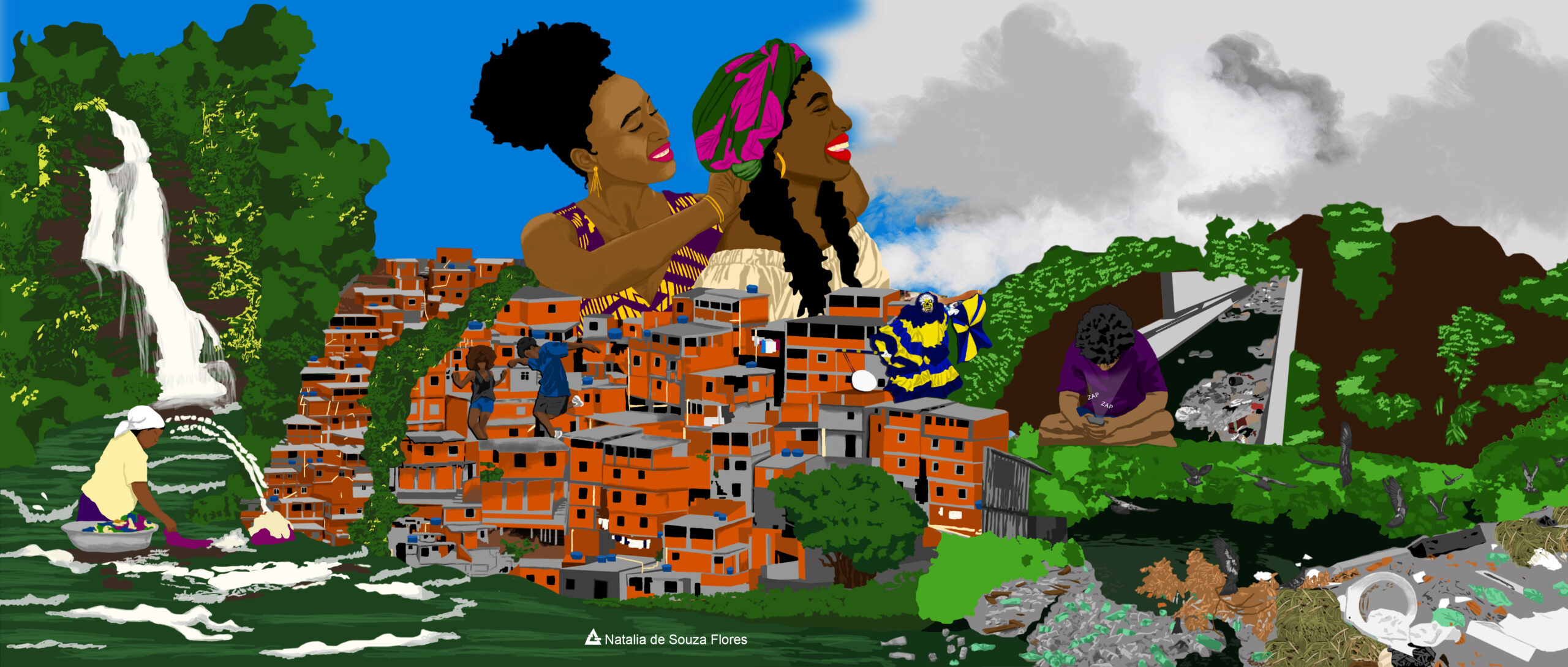

This is our latest article in a series created in partnership with the Behner Stiefel Center for Brazilian Studies at San Diego State University, to produce articles for the Digital Brazil Project on water issues and the LGBTQIAPN+ population in Rio’s favelas and in the Baixada Fluminense for RioOnWatch.
My Favela, My Quilombo, My Research
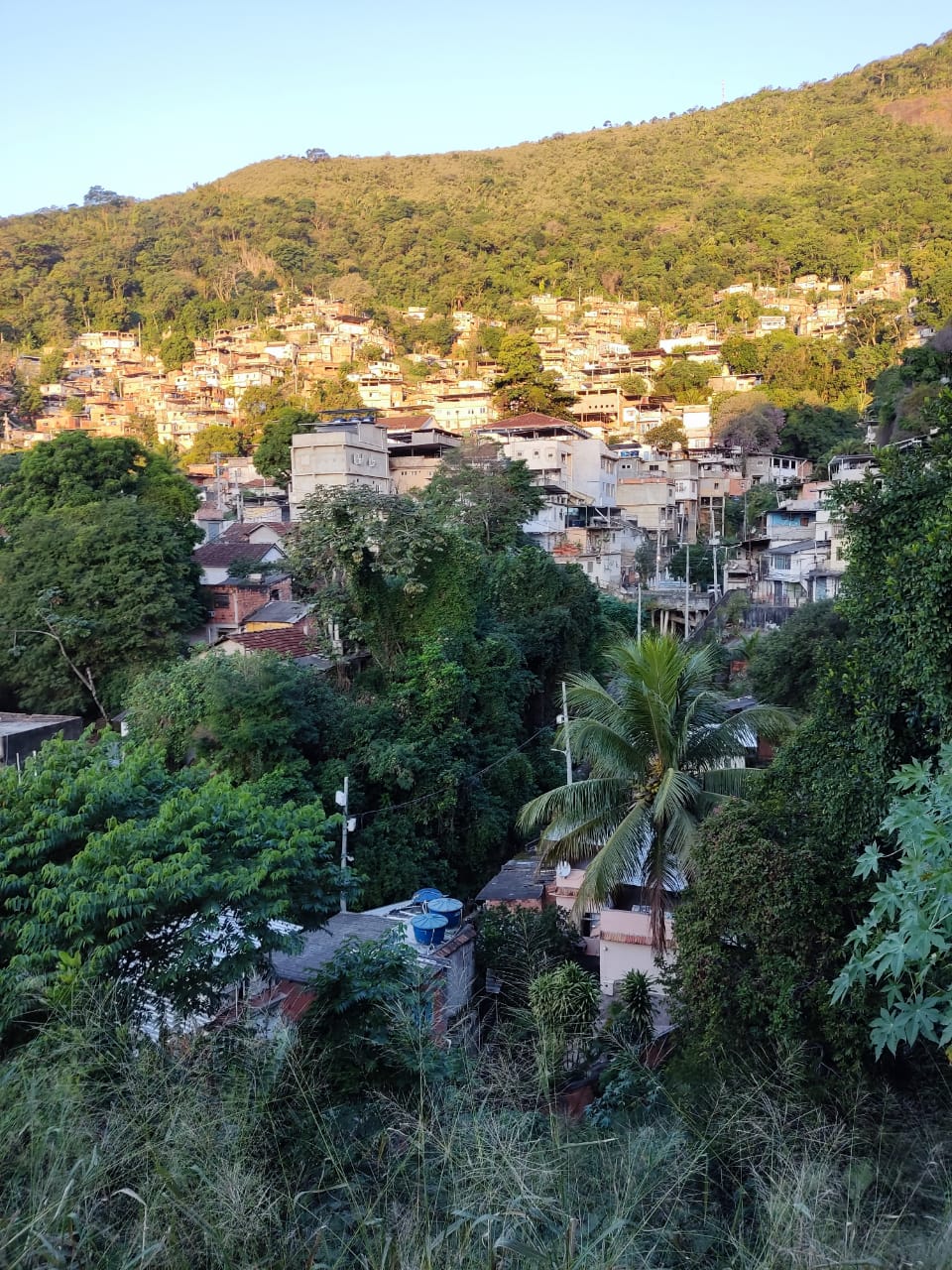
I decided to research my own community, the place where I grew up with my family and friends. I have always understood the favela as an extension of the quilombo, spaces socially organized by Africans and Afro-Brazilians. Quilombos were formed primarily during times of slavery, to organize pockets of life with freedom, without the domination and the violence perpetrated by enslavers. The term ‘favela’ appears en masse after the abolition of slavery in Brazil in 1888 and becomes central to questions of the territorialization of Black resistance and the struggle for housing in the country. Quilombos and favelas are both, to some degree, types of autonomous territories that emphasize collectivity as a mode of social organization.
I live in the Tijuca Forest, one of the largest urban forests in the world, which served as shelter for quilombola groups fighting for freedom during 388 years of Black enslavement in Brazil. Today, 135 years after abolition, that same forest is still home to descendants who continue to fight for freedom and rights. With the signing of the Lei Áurea (Golden Law), formerly enslaved people and their descendants started building favelas on the hillsides of Tijuca, such as Turano, Salgueiro, and Morro da Formiga. Communities with incredible nature, surrounded by Atlantic Rainforest, they are places with a history of struggle and resistance. Exactly for this reason, I chose to investigate the perceptions, memories, and local history of the place where I was born. This was a challenge: today I am someone capable of conducting research and not just being the subject of research.
Located in Tijuca in the North Zone of Rio de Janeiro, my community, Formiga, started urbanizing in the 1940s, close to the area demarcated as the Tijuca National Park. The favela’s land is home to natural springs as well as great biological and cultural diversity. Currently, it sustains cultural traditions such as the Império da Tijuca samba school, the Folia de Reis [celebrated on Epiphany, January 6], and the struggle for environmental preservation.
Against this backdrop, I was born and raised by three generations of Black women who experienced the process of the favela urbanizing with all its precariousness. This family history combined with the fact that I was the first in my family to attend university and study Social Sciences is what motivated my research. It is a way of contributing to climate justice, changing reality, and building alternatives while it is still possible.
The Cascata River: A River of Memories
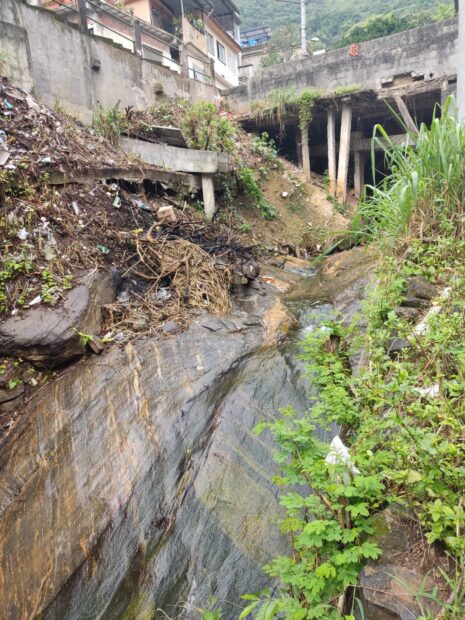
In Formiga, the Tijuca Forest supplies the largest water source—the Cascata River—which flows through the community and maintains the region’s biodiversity. The river is about a kilometer long and is in the northwest part of the community. It is extremely important for the natural and cultural diversity in the area and is a historical landmark of the favela. Residents over 50 have witnessed the degradation of the river, but they still remember when it was possible to swim. They have kindly shared their memories to shine a light on this history.
When asked “What is the main feature of Morro da Formiga?” one resident who did not want to be identified responded:
“For me, the Cascata River—was where I spent my childhood… My childhood was spent on the riverbanks—it was great! We washed clothes in the river, the water was very clean… there was no sewage, you didn’t notice sewage… we used to play in the river, you know? We slid down rocks, it was great! There were even spots that had shrimp and tiny fish… but not anymore, since there’s a lot of filth, garbage, and sewage… also, the water has diminished a lot… so it gets very filthy. Today, it’s a very polluted river, kids can’t play, and we can’t wash clothes there anymore.”
For me, these memories speak of a different river altogether. My generation never knew Morro da Formiga with less pollution, with a river where residents could socialize, that was a source of income for washerwomen, a place of leisure for children, and even a source of food. This is unimaginable for my generation. And the way she used plural pronouns is notable—“we played,” “we washed clothes.” It shows a sense of community and constant socializing around the Cascata River.
The experiences of my generation with the Cascata River, by contrast, are very different. We do not use its water, we do not fish in it since shrimp and fish no longer exist there, and as kids we only ever played on the edge of the river due to intense pollution in the stream.
We must make favelas resilient to climate change and take urgent measures to stop it and its impacts. In Brazil, favelas and urban peripheries are the areas most impacted by climate change and environmental racism. Preserving and conserving our rivers is therefore essential.
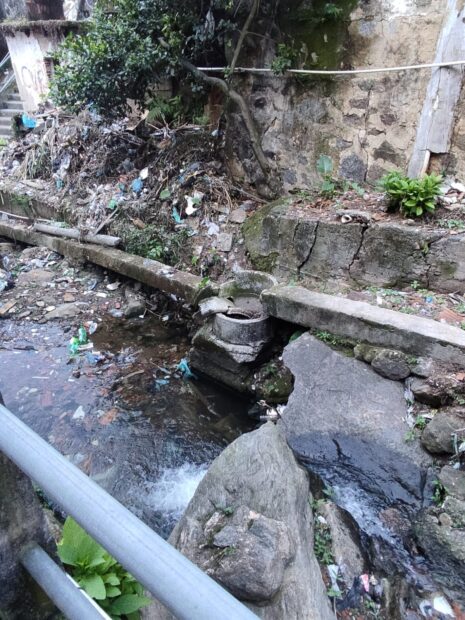
It is the government’s obligation to restore and preserve rivers that flow through favelas by rethinking basic sanitation, removing sewage, restoring riverbanks to fertile soil for diverse flora and fauna, and providing socio-environmental education. This is affirmed by another interviewee from Formiga:
“The government doesn’t care about anything! Some places here are just awful… they don’t trim the weeds anymore. They don’t clean anything, my child! This is what it’s like now… everywhere you look, the vegetation is so high it invades people’s homes… the river is clogged up with weeds. Some places are even worse than here, higher up on the hill. People are dying in the mud, in the shit… People are dying in the water; they see it flooding their homes because of these clogged drains… So, that’s it, the plants grow and there’s no one to clear it. Look over there at the stairs, for example, it’s filled with weeds! How can anyone get through like that? I don’t even like to walk over there anymore… But if there were some maintenance, it would be good.”
The same resident highlighted sewage as the main cause of degradation of the Cascata River. For her, the structural denial of the right to adequate housing made the favela grow quickly, without public investment in sewerage works. The Cascata River became an open sewer because it was the only option to dump wastewater coming from houses. The assassination of the Cascata River is the putrid consequence of a [lack of] public policy.
“It is sewage that is the biggest cause. Actually, City Hall built a sewerage system, but it was poorly done and did not cover the whole community. The network clogs a lot and, on the whole, sewage overflows and ends up in the river. So, with sewage in the river, there are no more fish. Even the egrets have stopped coming often! Birds came to get fish from the river, now they barely come anymore, because there are no more fish due to the sewage… There is a lot of sewage in the river!”
This opinion is shared by her neighbors, who were also interviewed. In fact, a third resident recalled that there were plans by authorities to install a channel in the Cascata River, officially transforming the river into a sewage pipe.
“The lack of investment has been going on for many years… if they channeled the river, the garbage wouldn’t make it in!… The Favela-Bairro program had a proposal to channel the Cascata River because sewerage is also important. But, well, the first challenge were the funds for this to happen.”
A younger resident, upon hearing these reports, lamented the state of the river. For her, the ditch only resembles a river on rainy days, when the volume of water increases and fills the Cascata riverbed.
“We don’t have this relationship with the river anymore, because when you look all you see is garbage and sewage. There’s no river left. The water level only rises in the rainy season. When heavy rains come, the water rushes down into the river and it can even turn into a waterfall.”
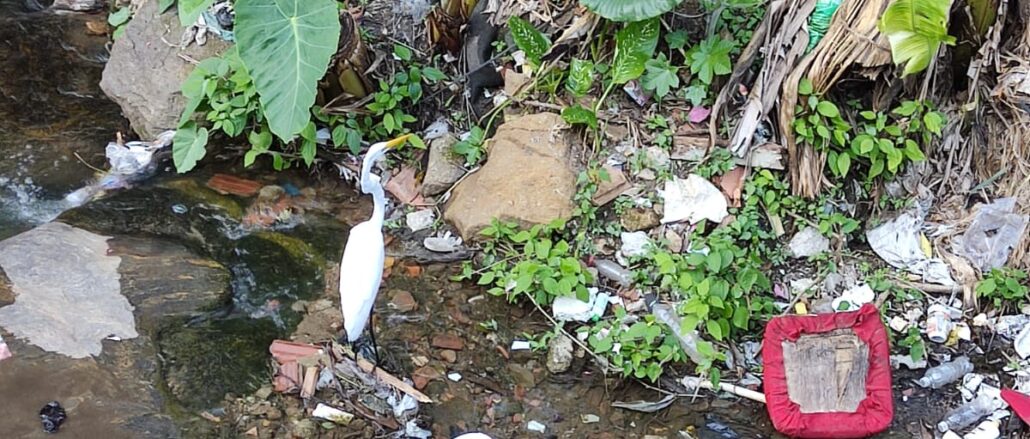
An Informed Favela Can Organize for Climate Justice
Favelas are the places most impacted by the effects of climate change in Rio de Janeiro, exacerbating social inequality, environmental racism, food insecurity, and other processes. The increase in the Earth’s temperature destabilizes the seasons, causes floods and droughts, increases sea levels, melts glaciers, and significantly reduces biodiversity. It is the role of governments to organize and plan interventions to mitigate damages from global warming in the favelas and urban peripheries. Faced with this situation, it is necessary to share solutions with and from the favelas and information from the scientific community in addition to stimulating climate mobilization and resident organizing.
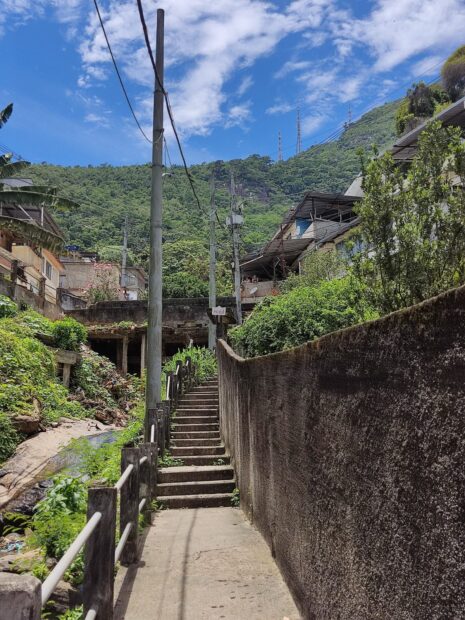
The residents of Formiga that I heard from know that there is a lack of concrete government action to recognize and honor the importance of the Cascata River for the community. If the authorities were truly sensitive to the role this river has for the favela, it would already be clean, full of fish and shrimp, and residents would have sewage collected and treated. Their memories attest to the environmental, social, cultural, economic, and nutritional importance of having a clean river running through the community. However, there is a consensus of hopelessness in the statements I heard. Most consider the degradation of the river to be irreversible. They don’t even see it as a river anymore, but rather as a ditch, an open sewer that should be channeled and covered instead of being cleaned up and made available to the community. This is precisely why some residents want to reshape how the river is seen and show their neighbors that, however tragic the situation may seem, there is still a solution. Despite attempted murder each and every day, the Cascata River is not dead yet. And if there is life, there is hope.
The path to revitalizing the river involves organizing residents to demand public policies and initiatives that guarantee a dignified and environmentally sustainable life for the community. For example, a sewage collection network planned specifically for the local reality and geography, which does not consider the river as drainage for wastewater and favors a local sewage treatment bio-system. We need intelligent waste management focused on recycling and reuse for composting organic waste, with projects that foster socio-environmental education and reduce consumption. The solution also involves public investment in community gardens and, above all, in existing ecological projects in the favelas, which already offer efficient solutions to problems exacerbated by government neglect.
This is why community organizing is fundamental for advancing climate justice, environmental education, and the sharing of information and knowledge to stimulate the reproduction of local solutions that attack systemic problems. This hinges on community knowledge being organized in support of environmental preservation of the area, for both the safety of residents facing climate change and to guarantee the permanence of the favelas. The fight for climate justice is the fight for life and for the existence of favelas, our rivers, and territories. The fight is not just for the Cascata River, it is for survival itself.
About the author: Renan Oliveira dos Santos was born and raised in Morro da Formiga. He studies Social Science at the Federal University of Rio de Janeiro and hopes to launch the Cascata River Guardians movement, working with the Brota na Laje Favela Youth Collective. Renan helped implement the Brota na Laje College Prep Course, alongside other social, cultural, and environmental projects in the favelas of Tijuca.
About the artist: Natalia de Souza Flores was born and raised in Rio de Janeiro’s North Zone and is a member of Brabas Crew. With a degree in Graphic Design from Unigranrio in 2017, she has worked as a designer since 2015. She launched a magazine of collective comics called ‘Tá no Gibi’ in 2017 at the Rio Book Biennial. Her main themes are based in African culture, using cyberpunk, wicca and indigenous elements.
